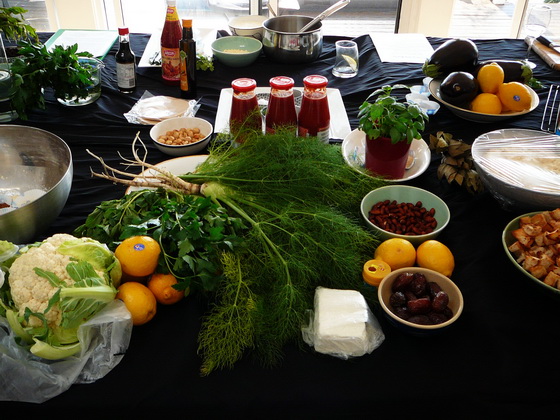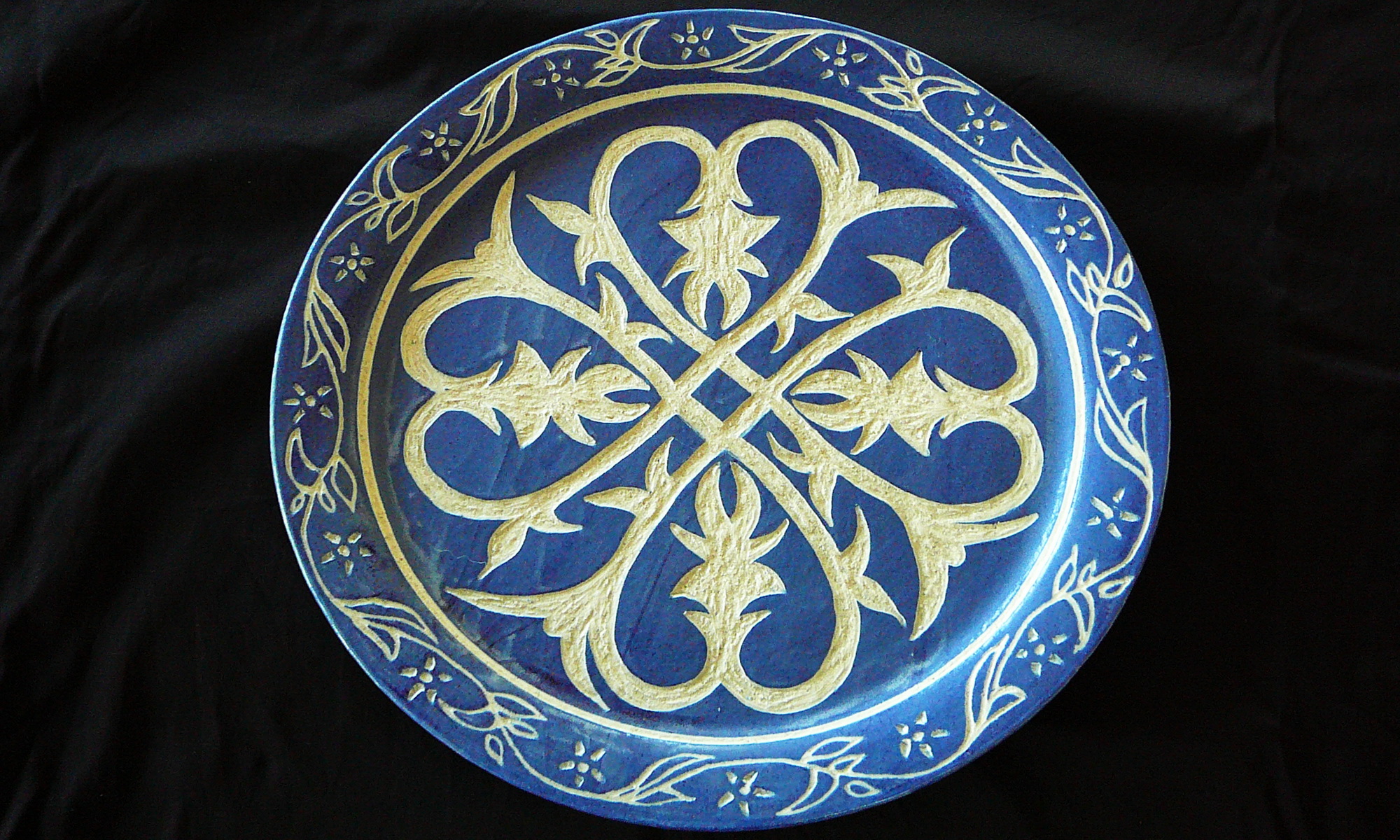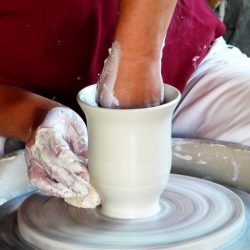
Here are some tasty recipes you can prepare using your pottery cookware.
Omelet Appetizer
This recipe is a fabulous appetiser for 4- 6 people, or is great for a light meal with a fresh salad and bread. You cook and serve in the ceramic broiler straight from the oven. You can also use for other recipes in the microwave or oven but never use on the stove top. Always use an oven mitt and serve on a wooden board or cosy when you bring it to the table. You can clean the broiler by hand in soapy water, and is safe for the dishwasher. For stubborn stains use a scrubber or steel wool. Enjoy!
Ingredients
- 3 medium potatoes
- 1 onion
- 6 eggs
- cup of cream
- cup grated cheese (cheddar of parmesan)
- 1 tbsp of your favourite fresh herb
- 2 tbsp olive oil
- Salt and pepper to taste
Preparation
Peel and cube the potatoes. Microwave or parboil till just tender. Chop onion and mix with potato and oil in your ceramic broiler. Put under grill for about 20 minutes on high heat till contents are lightly browned. In the meantime, whisk 4 eggs, cream, cheese, herb, salt and pepper. Pour egg mixture over the potatoes and onion and put back into the oven for about 10-15 minutes, stirring after 5 minutes, until it is somewhat firm. Remove from oven; break remaining to eggs on top of the omelette and cover. After about 5 minutes, stir contents with a fork to ensure that the mixture cooks but is slightly runny (or to your taste). Serve with fresh bread or lightly toasted Turkish bread.
North African Chicken and Date Tagine 130mins Serves 4
Ingredients
- 675g/1lb Chicken Pieces 2 Bay leaves
- 4 tbsp Olive Oil 480ml/16fl.oz. Hot Chicken Stock
- 1 large Onion, chopped 12 dates, stoned and halved
- 2 Large Garlic Clove, crushed 4 tbsp whole blanched almonds
- 1 teasp Ras el Hanout seasoning 2 tbsp honey
- 1 teasp White Cumin Seeds salt to taste
Preparation
Heat the oil until hot in base of Tagine on stove top with diffuser between the heat and the Tagine. Add the onion, garlic, Ras el Hanout and cumin seeds and fry gently, stirring, for 15 minutes.
Then add the bay leaves and stock and simmer, uncovered for 30 minutes until reduced by one 3rd.
Add the chicken mix well, cover and simmer for a further 1 hour, adding a little water or stock if necessary but not so much as to make the liquid too runny.
Finally add the dates, almonds, honey and salt to taste, mix well and simmer for a further 15 minutes. Serve hot over couscous or rice.
Ras el Hanout
Ingredients
- 11/4 tsp ground allspice 1 tsp ground cinnamon
- 2 tsp ground nutmeg 11/2 tsp ground cardamon
- 20 threads saffron 2 tsp ground ginger
- 112/ tsp ground black pepper 2 tsp salt
- 11/2 tsp ground mace 1 tsp ground tumeric
Use pre-ground spices and blend together and store in tight lidded container.
Salad of sweet potatoes
Ingredients
- 500 g of sweet potatoes 1 pinch of cumin
- 1/2 cup of oil 1 coffee spoonful of sweet red pepper
- 1 crushed onion 1 spoonful of crushed parsley and coriander
- 1 pinch of salt juice of half a lemon
- 1/2 coffee spoonful of ginger the peel of preserved lemon cut into little pieces
- 1 glass of water some olives cut into pieces
Preparation
Melt the onion with oil, salt, safran and ginger, pour the glass of water, add the sweet potaoes peeled and cut into pieces, cover the saucepan, cook for 5 mins, add the cumin ,red pepper, parsley ,corriander, lemon juice, the peel of a preserved lemon and the olives, reduce the sauce to be smooth. Serve fresh.
Moroccan Preserved Lemons
Ingredients
- 5 Lemons
- 1/4 c Salt; more if desired
- 1 Cinnamon stick
- 3 Cloves
- 5 To 6 coriander seeds
- 3 To 4 black peppercorns
- 1 Bay leaf
- Freshly squeezed lemon juice if necessary
Preparation
Preserved lemons, sold loose in the souks, are one of the indispensable ingredients of Moroccan cooking, used in fragrant lamb and vegetables tagines, recipes for chicken with lemons and olives, and salads. Their unique pickled taste and special silken texture cannot be duplicated with fresh lemon or lime juice, despite what some food writers have said.
In Morocco they are made with a mixture of fragrant-skinned doqq and tart boussera lemons, but I have had excellent luck with Australian lemons. Moroccan Jews have a slightly different procedure for pickling, which involves the use of olive oil, but this recipe, which includes optional herbs (in the manner of Safi), will produce a true Moroccan preserved-lemon taste.
The important thing in preserving lemons is to be certain they are completely covered with salted lemon juice. With my recipe you can use the lemon juice over and over again. (As a matter of fact, I keep a jar of used pickling juice in the kitchen, and when I make Bloody Marys or salad dressings and have a half lemon left over, I toss it into the jar and let it marinate with the rest.) Use wooden utensils to remove lemons as needed.
Sometimes you will see a sort of lacy, white substance clinging to preserved lemons in their jar; it is perfectly harmless, but should be rinsed off for aesthetic reasons just before the lemons are used. Preserved lemons are rinsed, in any case, to rid them of their salty taste. Cook with both pulps and rinds, if desired.
If you wish to soften the peel, soak the lemons in lukewarm water for 3 days, changing the water daily.
Quarter the lemons from the top to within 1/2″ of the bottom, sprinkle salt on the exposed flesh, and then reshape the fruit.
Place 1 tbsp. salt on the bottom of a sterilized one-pint mason jar. Pack in the lemons and push them down, adding more salt, and the optional spices, between layers. Press the lemons down to release their juices and to make room for the remaining lemons. (If the juice released from the squashed fruit does not cover them, add freshly squeezed lemon juice – not chemically produced lemon juice and not water.*) Leave some air space before sealing the jar.
Let the lemons ripen in a warm place, shaking the jar each day to distribute the salt and juice. Let ripen for 30 days.
To use, rinse the lemons, as needed, under running water, removing and discarding the pulp, if desired – and there is no need to refrigerate after opening. Preserved lemons will keep up to a year, and the pickling juice can be used two or three times over the course of a year.
* According to the late Michael Field, the way to extract the maximum amount of juice from a lemon is to boil it in water for 2 or 3 minutes and allow it to cool before squeezing.

